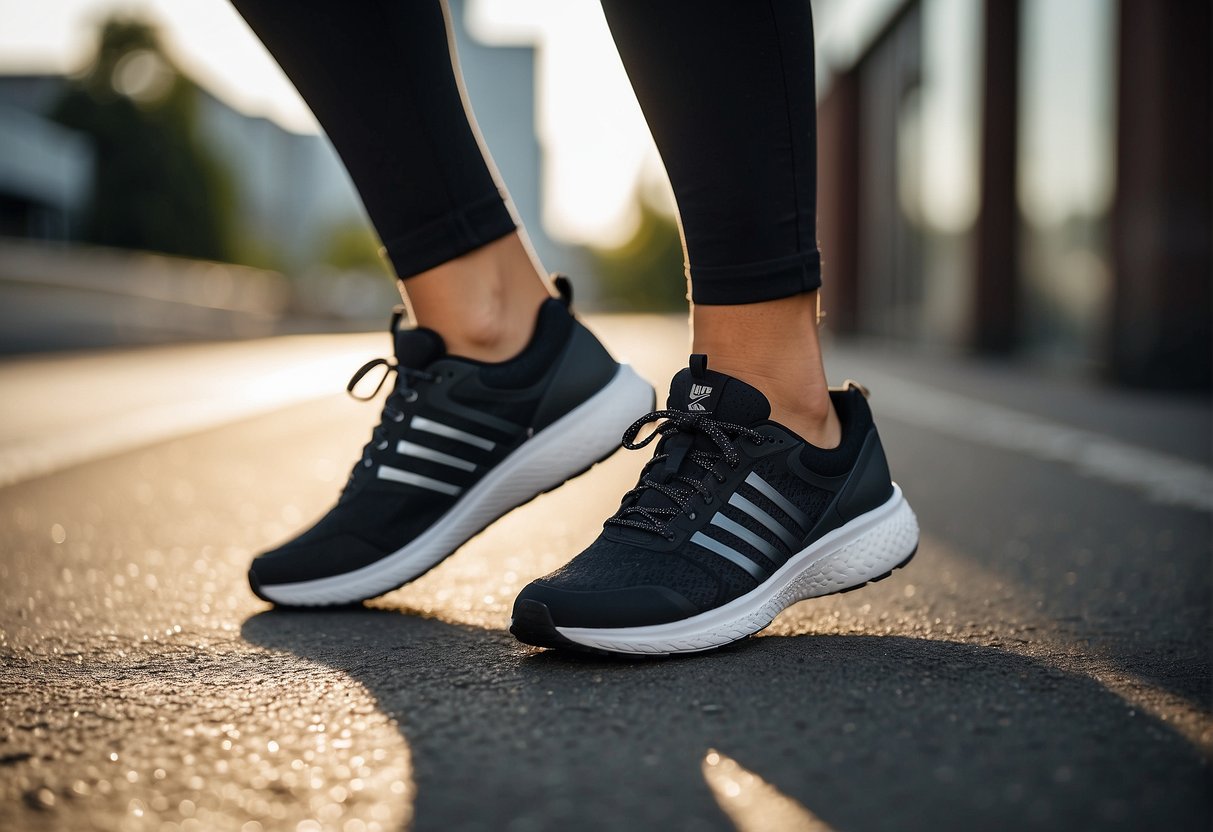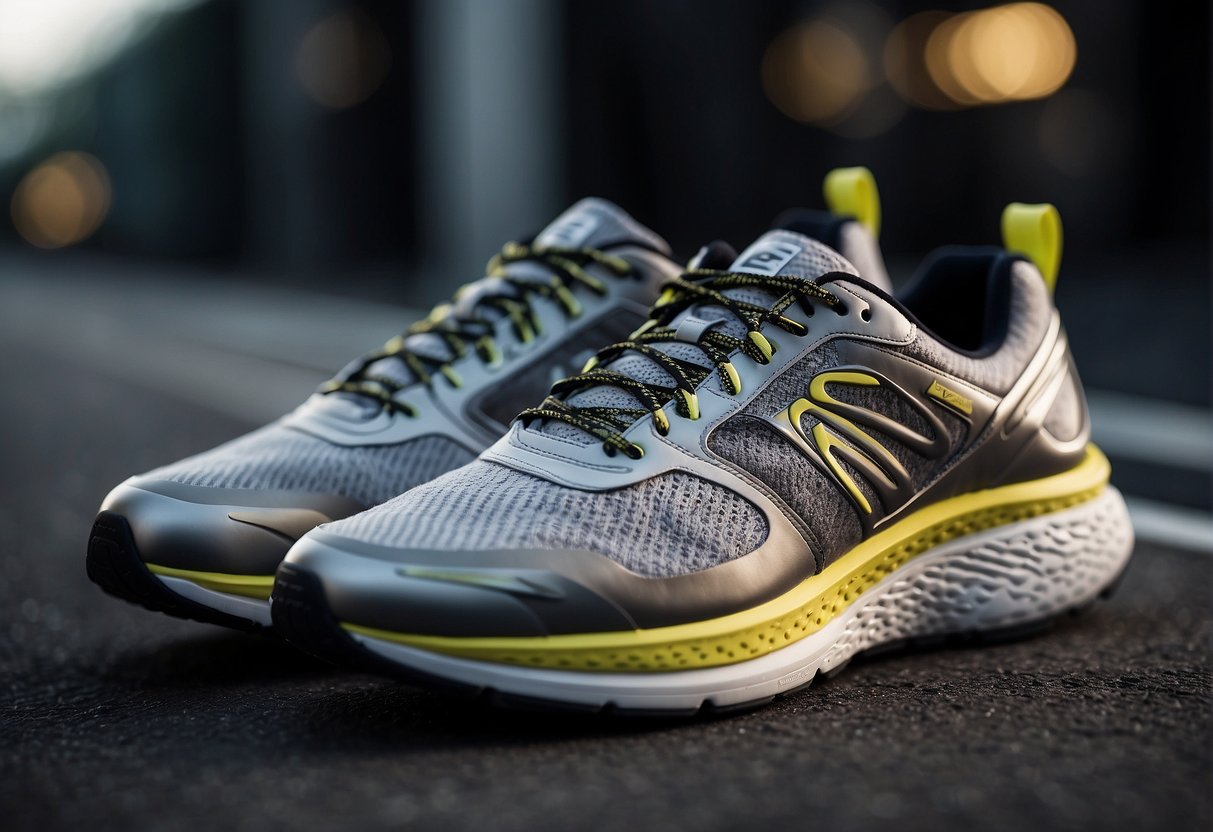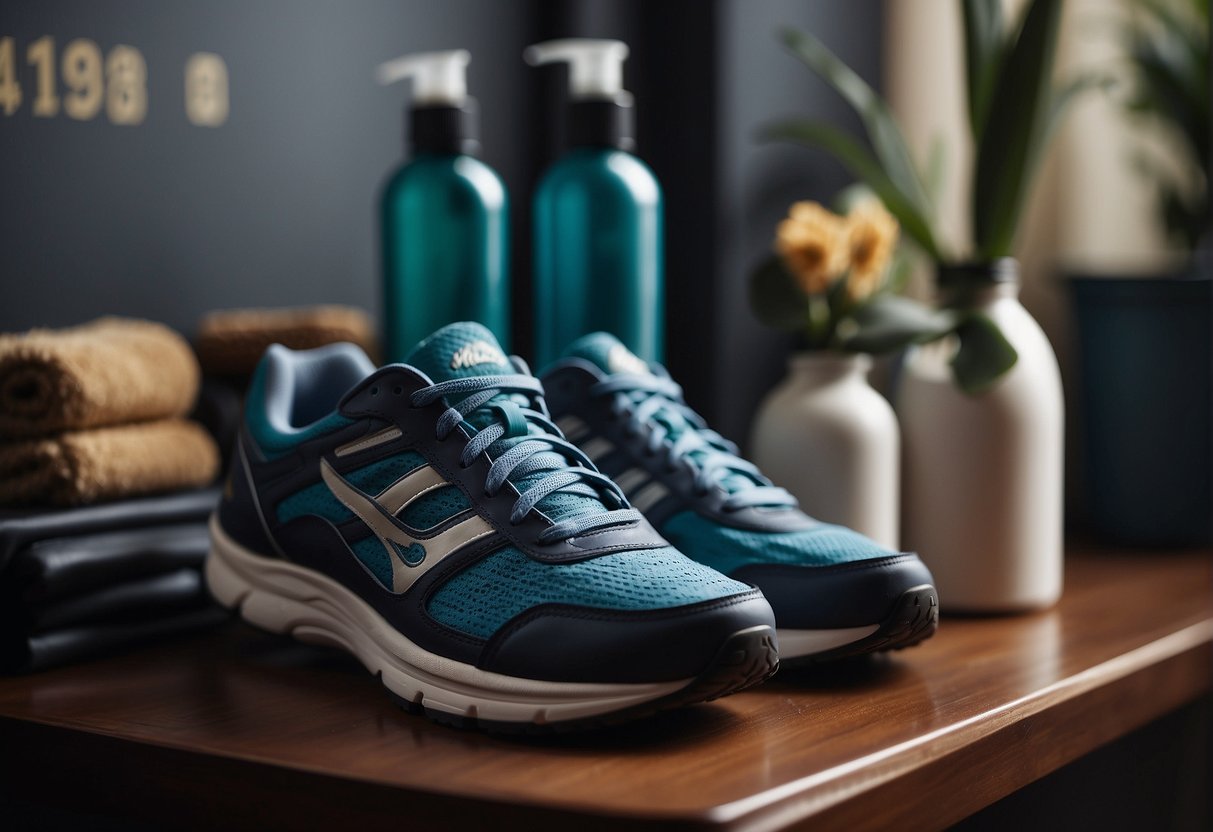Selecting the best running sneakers is crucial for comfort and performance, and it becomes even more important when considering foot mechanics like supination. Supination, which involves the outward roll of the foot during normal motion, requires specific features in shoes to provide proper support and reduce the risk of injury. For individuals whose feet supinate, the search for the perfect sneaker is about finding a balance between flexibility, cushioning, and stability.

With the abundance of options in the market, understanding the key characteristics that make a running shoe suitable for supination can guide you toward making an informed choice. The correct sneakers can help to distribute the impact of each stride more evenly, which is vital for supinating runners to avoid unnecessary strain on their feet, ankles, and legs. By opting for sneakers designed with supination in mind, you not only enhance your running experience but also invest in the health and longevity of your feet.
Key Takeaways
- Proper footwear selection is vital for runners who supinate to ensure comfort and reduce injury risk.
- The best sneakers for supination provide a balance between flexibility, cushioning, and stability.
- Quality running shoes can help to distribute the impact of running more evenly, supporting long-term foot health.
Quick Navigation
Quick Navigation
Understanding Supination
https://www.youtube.com/watch?v=PJbKjIq-FoA&embed=true
When I discuss supination, I’m referring to the way my foot rolls outward as I walk or run. This pattern affects the outer edge of the foot primarily, placing more pressure there. As a supinated runner, I realize that not all feet are the same; arch height often plays a crucial role in supination. Typically, a higher arch is associated with this foot type.
It’s essential for me to choose the right shoe that counters excessive supination. This choice ensures better support and can improve my gait while reducing potential injuries. Here’s what I look for in a sneaker:
- Arch Support: Shoes with adequate arch support cater to the higher arch of a supinated foot, helping distribute pressure evenly.
- Cushioning: Extra cushioning along the outer edge provides shock absorption where I need it most.
- Heel Support: A well-designed heel counter keeps my foot stable, avoiding excessive outward rolling.
My foot type dictates unique needs for running sneakers. By paying attention to the structure and features of the shoe, I can significantly enhance my running experience and comfort.
Key Features of Supination-Specific Sneakers
https://www.youtube.com/watch?v=SRBN56mtOvw&embed=true
When selecting sneakers for supination, several specific features make a significant difference in comfort and injury prevention. These features cater to the need for added support and cushioning on the outer side of the foot, ensuring a smoother transition during the natural gait cycle.
Superior Cushioning
For supination, super-soft cushioning like DNA LOFT or FF Blast is essential. I find that these materials provide an ultra-plush feel without compromising durability. This type of cushioning helps absorb the impact on the outer side of the foot, which is critical for supinators.
Stable Outsoles
The outsoles of my sneakers need to be robust and provide reliable traction. Materials like Continental rubber outsole not only offer excellent grip but also add to the shoe’s longevity. A segmented crash pad is also beneficial as it assists in creating a smoother transition from heel to toe.
Supportive Heel Design
A supportive heel design incorporates features like an internal heel counter or an external heel counter. This structure ensures my heel is securely held in place, minimizing unwanted movements that could lead to injury.
Structural Integrity
Shoes optimal for supination maintain structural integrity throughout extended wear. Reinforcements on the inner side of the sneaker are critical to counter the outward rolling of the foot. These features contribute to enhancing the overall extra support needed for a supinator’s natural gait.
Specialized Insole Construction
Insoles specific for supination have targeted cushioning where it’s needed most. They work in tandem with the midsole to ensure that my foot experiences a balanced level of support and that the pressure on my outer foot is alleviated.
Breathable Upper
Lastly, a breathable upper, such as an engineered air mesh upper, is indispensable in my running sneakers. It keeps my feet cool and comfortable while providing a flexible fit that adapts to my natural foot movements. Breathable shoes are crucial to avoid overheating and discomfort during runs.
Choosing the Right Shoe for Supinators
https://www.youtube.com/watch?v=jZWYlwp410o&embed=true
As a runner with a supinating stride, I understand the significance of securing a shoe that compliments my foot mechanics. The ideal pair of shoes for supinators should offer ample support, maintain a comfortable fit over long distances, and cater to the unique structure of high arches.
Assessing Foot Type and Arch Height
High Arches: My primary goal is to identify shoes that accommodate my high arches, as they naturally lead to supination. I perform a wet test or use a foot scanner to determine my arch type. A C-shaped footprint is indicative of high arches which necessitates a shoe with adequate cushioning to absorb shock.
Low Arches or Neutral Runners: Those with low arches or a neutral arch, on the other hand, require a shoe that supports their natural pronation. Ensuring this can prevent the excessive outward rolling characteristic to supinators like me.
Importance of Proper Fit
Snug Fit: I aim for a snug fit without constriction, allowing for slight movement of my feet within the shoes. Room in the toe box is essential, operating on the principle that I should have about a thumb’s width between the front of the shoe and my longest toe.
Wide-Footed Runners: For wide-footed runners, shoes designed with a wider base can provide that perfect fit.
Considerations for Long Runs and Distances
Cushioning for Comfort: For longer distances, I prioritize shoes with exceptional cushioning and durability to withstand the repetitive impact.
Rotation of Shoes: I also consider rotating between two pairs to allow materials in my running shoes to decompress and return to their natural state between runs, extending the life of my shoes and providing ongoing comfort.
Top Running Shoes for Supination
https://www.youtube.com/watch?v=YDsTYaNQgkk&embed=true
When I consider the best running shoes for supination, I prioritize options that offer superior cushioning and support to aid in promoting a neutral foot strike. Here’s my take on some top models specifically designed for supinators:
Brooks Glycerin
The Brooks Glycerin is renowned for its plush cushioning, making it an excellent choice for supinators needing extra comfort during their runs. I find its soft transition from heel to toe particularly helpful for those with a supinated gait.
Saucony Ride
Next, the Saucony Ride series. It’s equipped with ample cushioning and the brand’s FORMFIT technology that adapts to the foot, providing a custom fit. This customization is something I consider crucial for runners who supinate.
New Balance Fresh Foam X
The New Balance Fresh Foam X models offer a precision-engineered cushioning technology that ensures a plush and natural ride. My experience suggests that supinators will appreciate the stability and support it provides.
Adidas Ultraboost
For those who supinate, the Adidas Ultraboost delivers responsive cushioning that maximizes energy return. I typically recommend this for supinators who are looking for a boost in their performance.
Asics Gel Nimbus
The Asics Gel Nimbus features the brand’s GEL cushioning system for shock absorption and is a go-to for me when recommending a shoe that can help alleviate the impact on the joints for supinators.
Brooks Ghost
I’ve noticed that the Brooks Ghost strikes an exceptional balance between soft cushioning and responsiveness. It’s one of those versatile shoes that I believe can cater well to the stride of a supinator.
Brooks Adrenaline GTS
For those who need a touch more stability, the Brooks Adrenaline GTS ranks highly in my book. It offers a GuideRails support system to keep excess motion in check, which can be beneficial for supinators with additional stability needs.
Nike Air Zoom Structure
The Nike Air Zoom Structure is built with a firm foam to provide stability which, in my opinion, can help counter the outward roll of supination without being overly restrictive.
Hoka Bondi
The Hoka Bondi is known for its maximalist cushioning which I find exceptionally beneficial for supinators due to its ability to absorb impact and provide a comfortable stride.
Asics Gel-Cumulus
Finally, the Asics Gel-Cumulus offers a FlyteFoam midsole and rearfoot GEL technology, which I tend to recommend for supinators because of its effective combination of cushioning and bounce-back properties.
Comparing Shoe Types
https://www.youtube.com/watch?v=ztikvJ9WX_k&embed=true
In my experience, when selecting the best running sneakers for supination, it’s crucial to understand how varying shoe types cater to different running styles and foot mechanics. I’ll discuss some specific differences between neutral and stability shoes, as well as road and trail shoes, to help you make an informed choice.
Neutral Vs. Stability Shoes
Neutral running shoes are typically designed for runners with high arches who supinate or underpronate. This means their feet roll outward during their gait cycle. Neutral shoes generally provide minimal structural support but a high level of cushioning. They allow for the natural roll of the foot without corrective support, catering to those whose feet don’t roll inward excessively upon landing.
On the other hand, stability shoes cater to runners who need extra support due to moderate overpronation. While not as rigid as motion control shoes, stability shoes have features like a medial post in the midsole to prevent excessive inward rolling. For supinators, stability shoes might offer more structure than needed, potentially leading to discomfort or even injury, as found in studies such as this one.
Road Vs. Trail Shoes
Choosing between road shoes and trail shoes depends on the terrain I plan to run on. Road shoes are optimized for pavement and occasional forays onto packed surfaces with slight irregularities. They are usually lighter and provide more cushioning to absorb the repetitive impact of a hard surface.
Conversely, trail shoes are specifically designed for off-road running. They have aggressive tread patterns for enhanced grip and are typically more durable with features like a rock plate to shield my feet from sharp objects. The structure and traction in trail shoes are crucial for supination when running on uneven terrain to prevent ankle rolling, as detailed in this article.
My choice between these types must be informed by where I will be running and my foot’s movement. While trail shoes could offer added protection and support on rough terrain, road shoes would likely be more comfortable and better suited for urban running environments.
Enhancements in Recent Technology

In recent years, significant strides have been made in the design and manufacture of running sneakers tailored for supination. I’ll examine how these technological enhancements contribute to a better running experience by providing a soft and responsive ride, extra comfort, and superior shock absorption.
Advancements in Cushioning
The quest for the softest ride has led to impressive advancements in cushioning technologies. For instance, I’ve observed an increased use of gel-based midsoles that adapt to the runner’s foot, providing personalized comfort and shock absorption. Companies like ASICS have integrated this gel technology into their running shoes, as seen with their development of a cushioned running shoe for those experiencing supination.
Developments in Support Features
When discussing support features, I’ve noted the implementation of custom footbeds and contoured midsole designs. These enhancements cater to the need for stability without compromising the flexibility vital for a responsive ride. Companies are now providing shoes with asymmetrical lacing systems that align with the biomechanics of supination, leading to significant improvements in the way running shoes support the foot.
Improvements in Durability
Durability concerns have been addressed through the development of new materials and construction processes. The outsole of a shoe designed for supination has to withstand lateral wear while maintaining its structural integrity. The use of high-abrasion rubber compounds and strategic reinforcement in high-impact zones has considerably improved the durability of running shoes, an essential factor for runners who require both longevity and performance.
The Impact of Running Shoes on Health
https://www.youtube.com/watch?v=UvwO3vZ4YTs&embed=true
Choosing the right running shoes is crucial as they can significantly influence my overall foot health and prevent common running injuries.
Prevention of Stress Fractures and Injuries
In my experience, running shoes designed for supination help in distributing impact forces more evenly, which is vital in reducing the risk of stress fractures and other injuries. When shoes lack proper support or are unsuitable for a runner’s foot type, the danger of injuries escalates, especially for those with a supinated foot posture.
Benefits for Runners with Plantar Fasciitis
For runners like me dealing with plantar fasciitis, a condition characterized by pain in the heel and bottom of the foot, the right shoes make a significant difference. The supportive cushioning and appropriate heel structure in running shoes for supination provide extra support for the plantar fascia, which can alleviate pain and discomfort during runs.
Tips for Maintaining Your Running Shoes

Maintaining your running shoes is crucial to ensure they continue to offer the support and comfort you need, especially if you have selected a pair for supination. Here are some vital maintenance tips:
- Keep them Clean: Post-run, I like to remove any dirt or debris with a soft brush or cloth. It’s best to avoid putting your shoes in the washing machine, as it can damage the materials.
- Dry Properly: If my shoes get wet, I stuff them with newspaper and let them air dry away from direct heat. This absorbs moisture and helps maintain their shape.
- Rotate Shoes: Using more than one pair of running shoes can help extend their life. I find that alternating between shoes allows them to decompress and dry out between runs.
- Store Correctly: I make sure to keep my running shoes in a cool, dry place to prevent the materials from breaking down prematurely.
- Monitor Mileage: Running shoes should be replaced roughly every 300-500 miles. I track the mileage of my shoes to ensure I’m not running in worn-out sneakers.
Here’s a quick reference for some of the best options I’ve found that are specifically beneficial for those who supinate:
| Shoe Model | Type | Ideal For |
|---|---|---|
| New Asics Gel-Nimbus | Cushioned | Long Comfortable Runs |
| Mizuno Wave Technology | Responsive | Smooth Rides |
| Trail Runners | Rugged | Varied Weather Conditions |
I’ve personally found that lightweight shoes or stable neutral shoes can be a good choice for supination, providing a comfortable ride without excessive wear on the outer edge of my foot. Affordable options like these can kickstart anyone’s running journey while ensuring supreme comfort and an improved fit. Remember, the best option for you is one that fits well, feels comfortable, and supports your unique running style.

